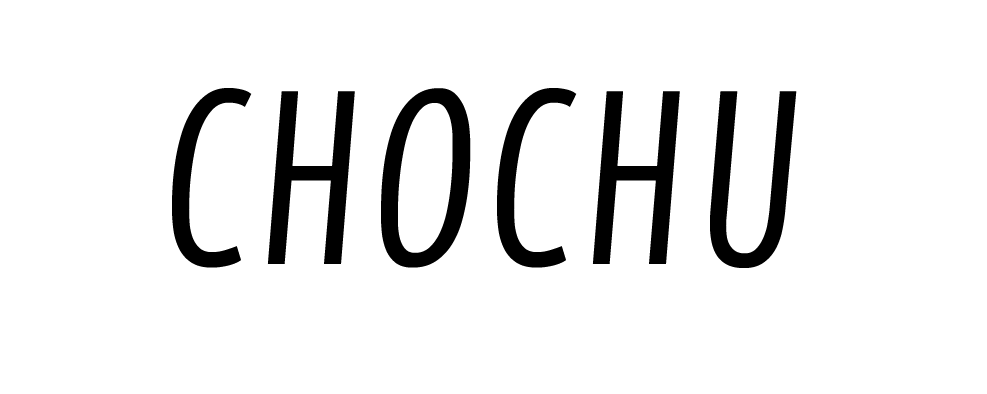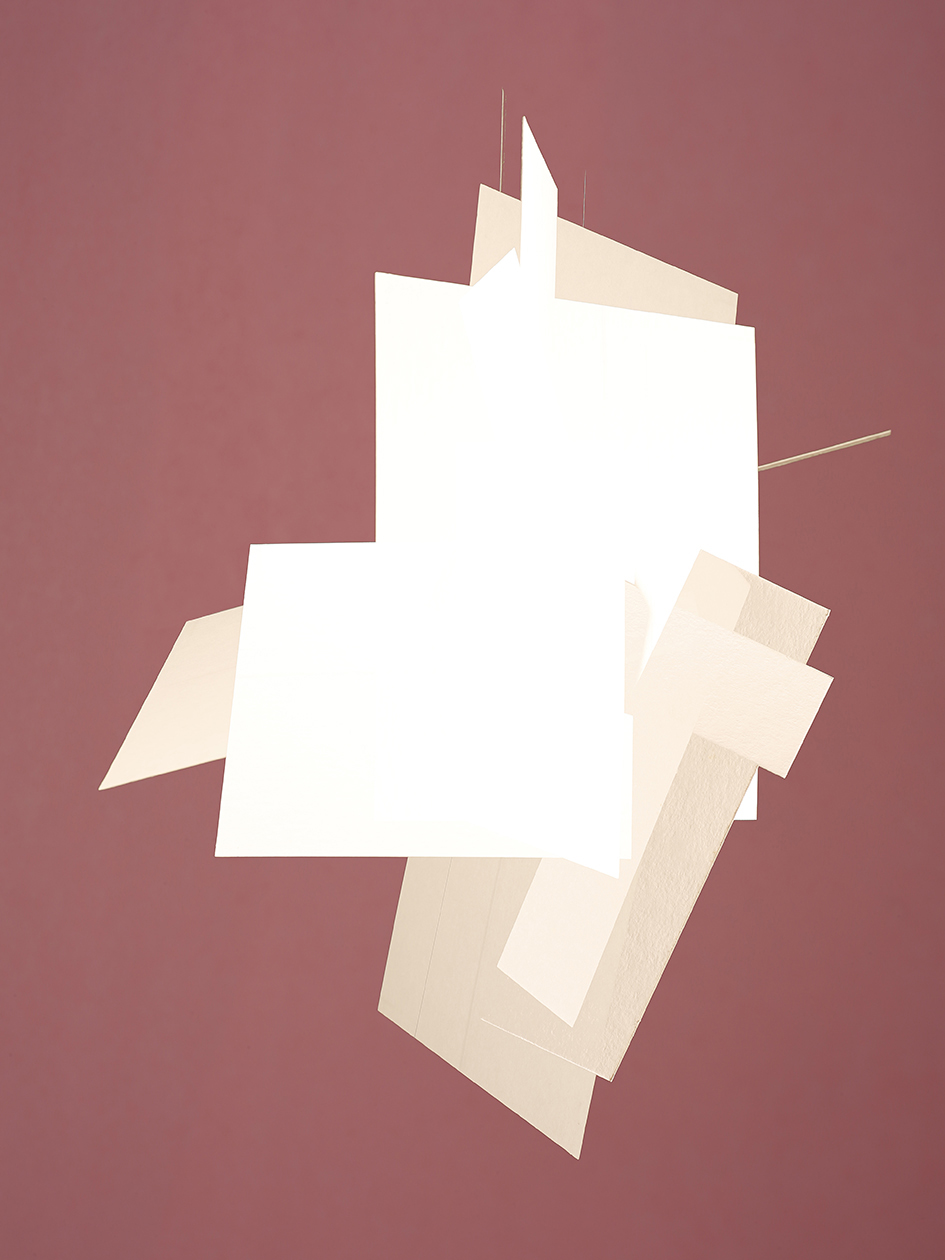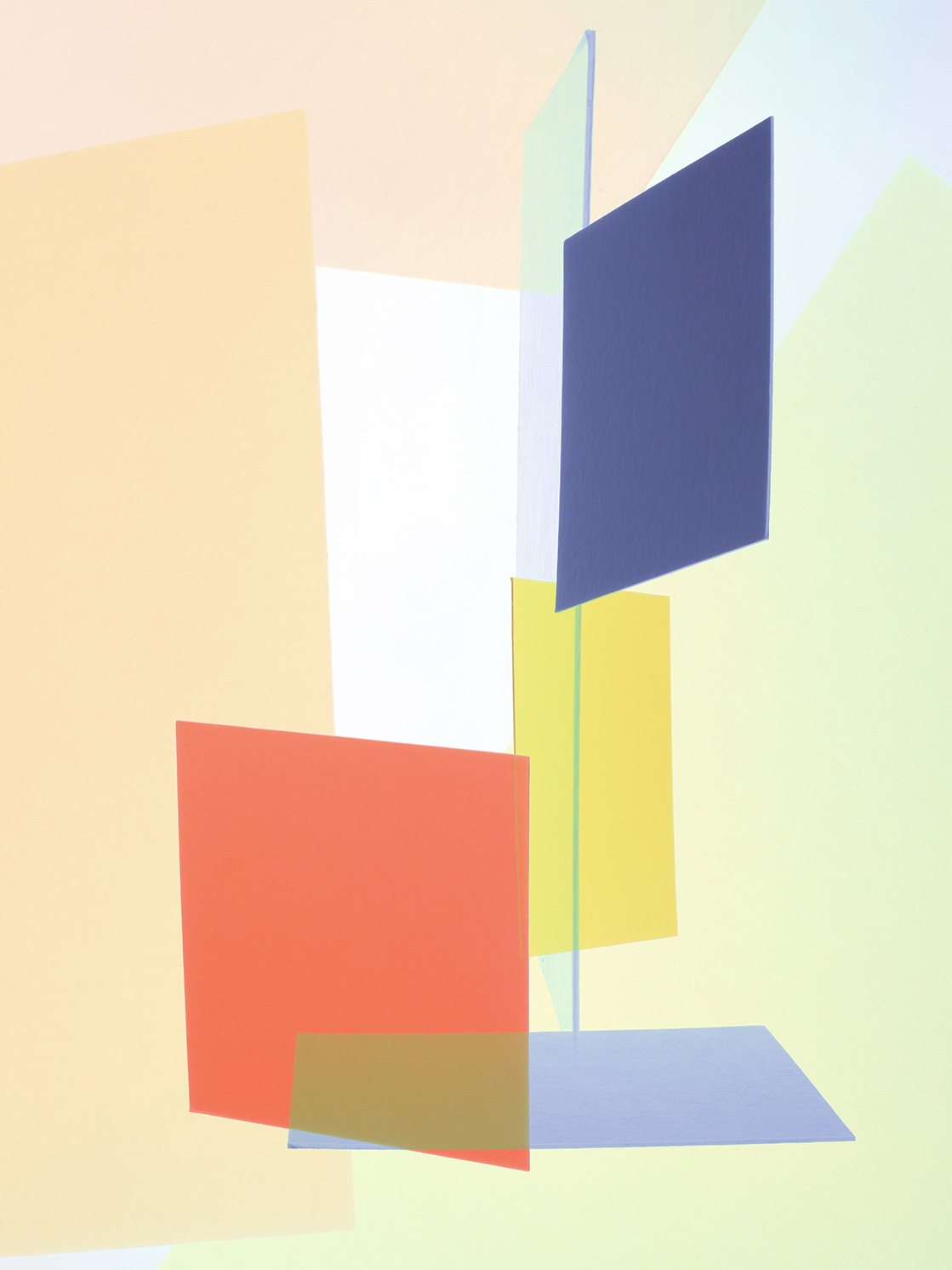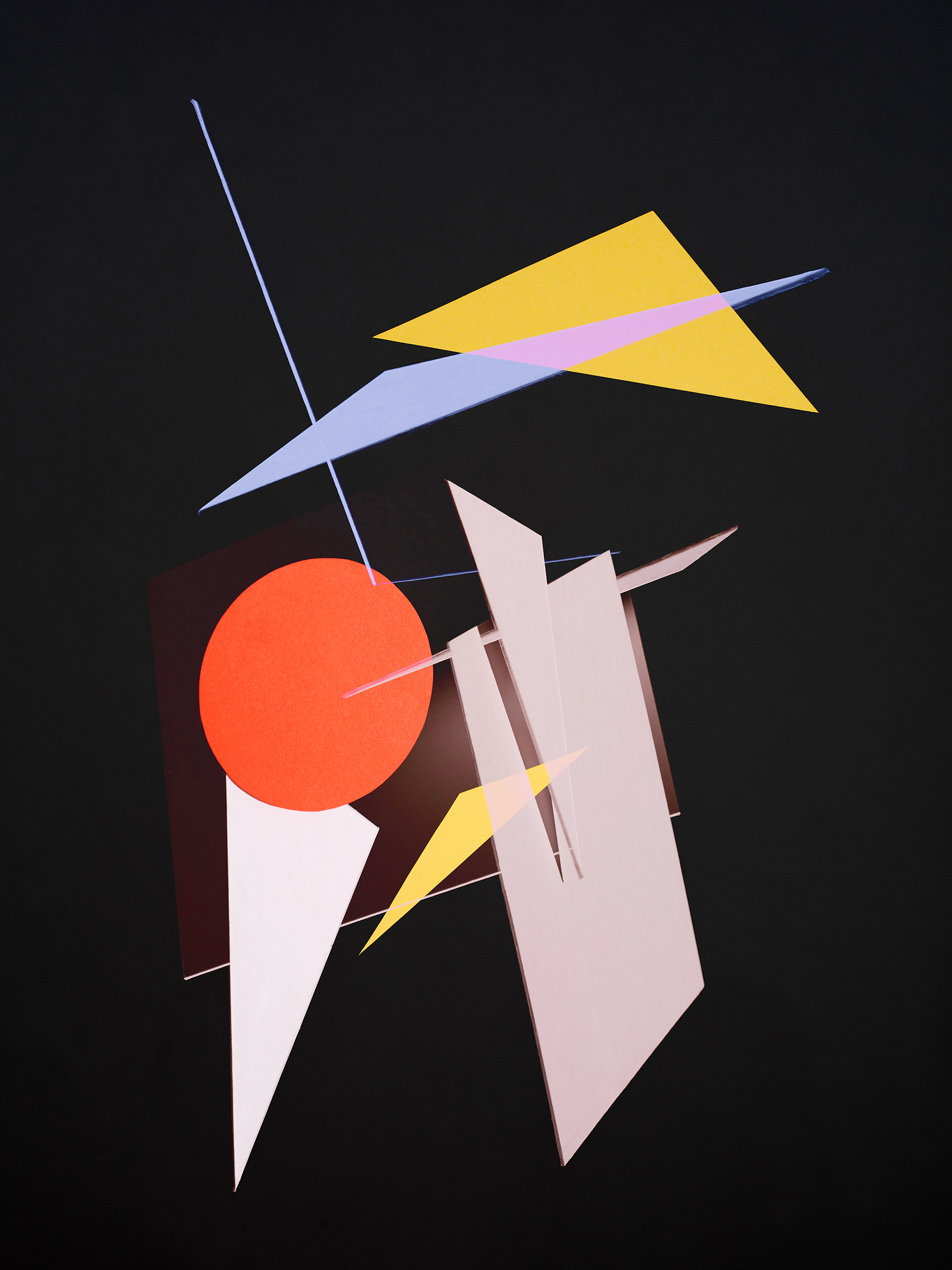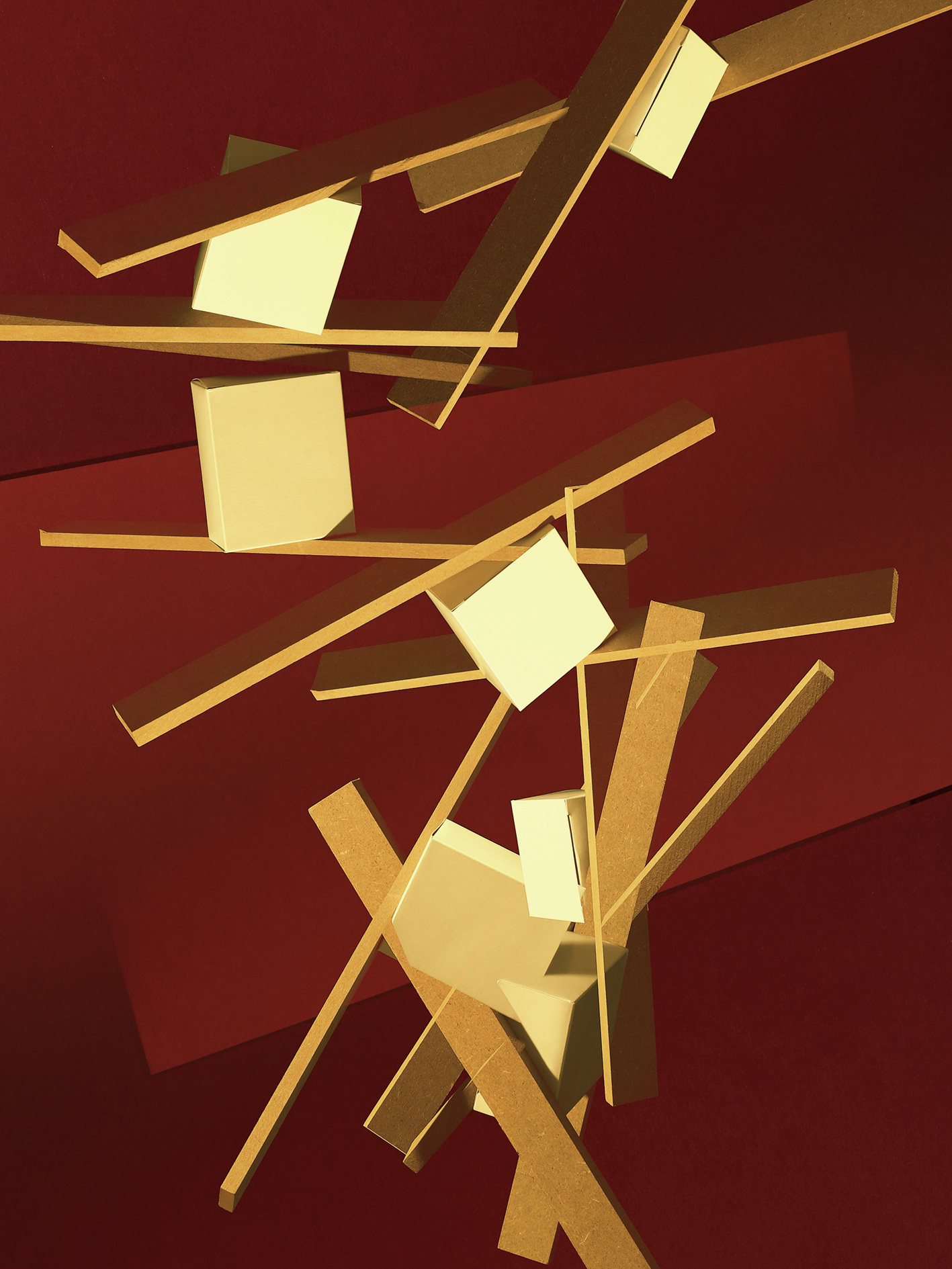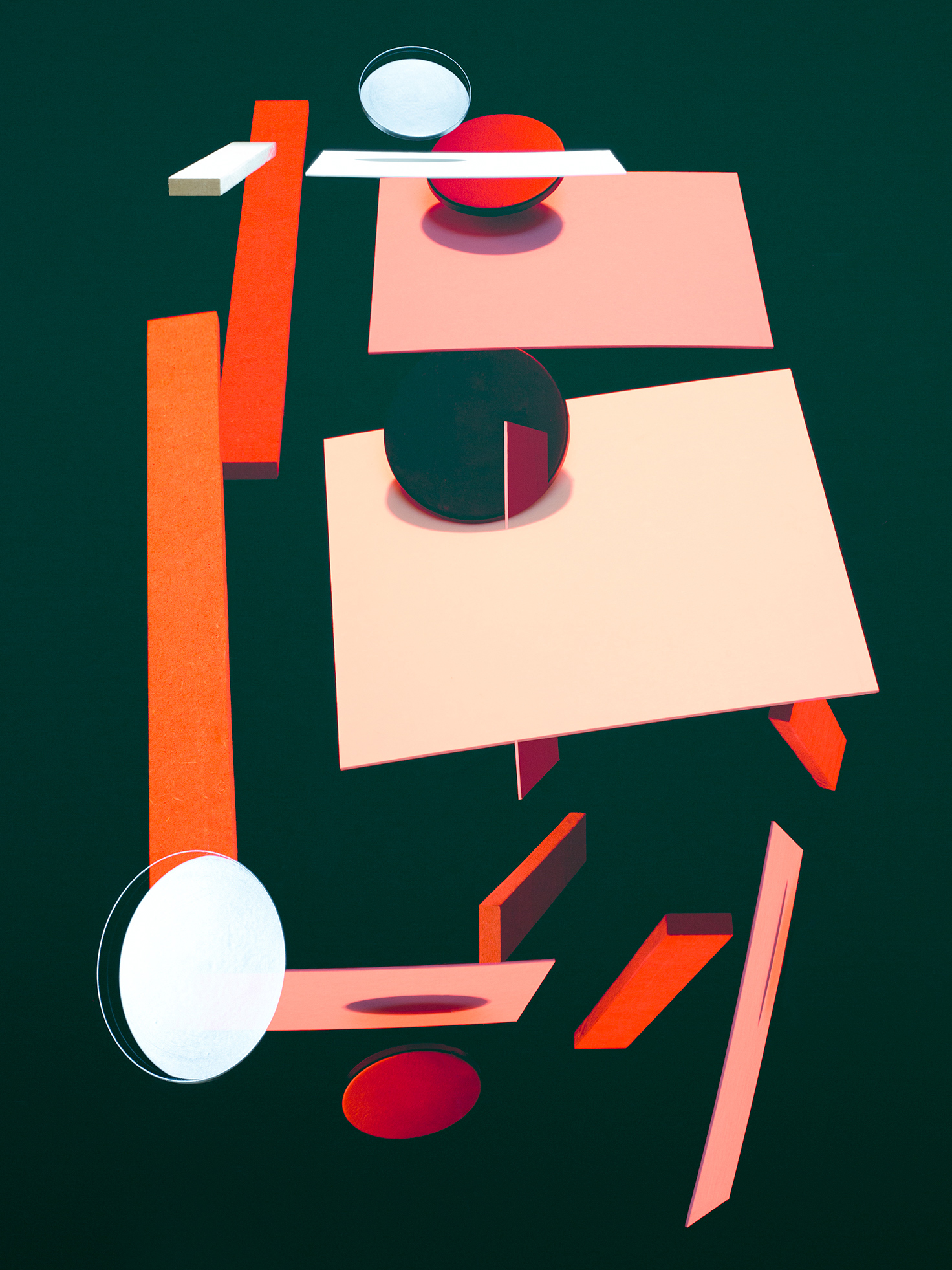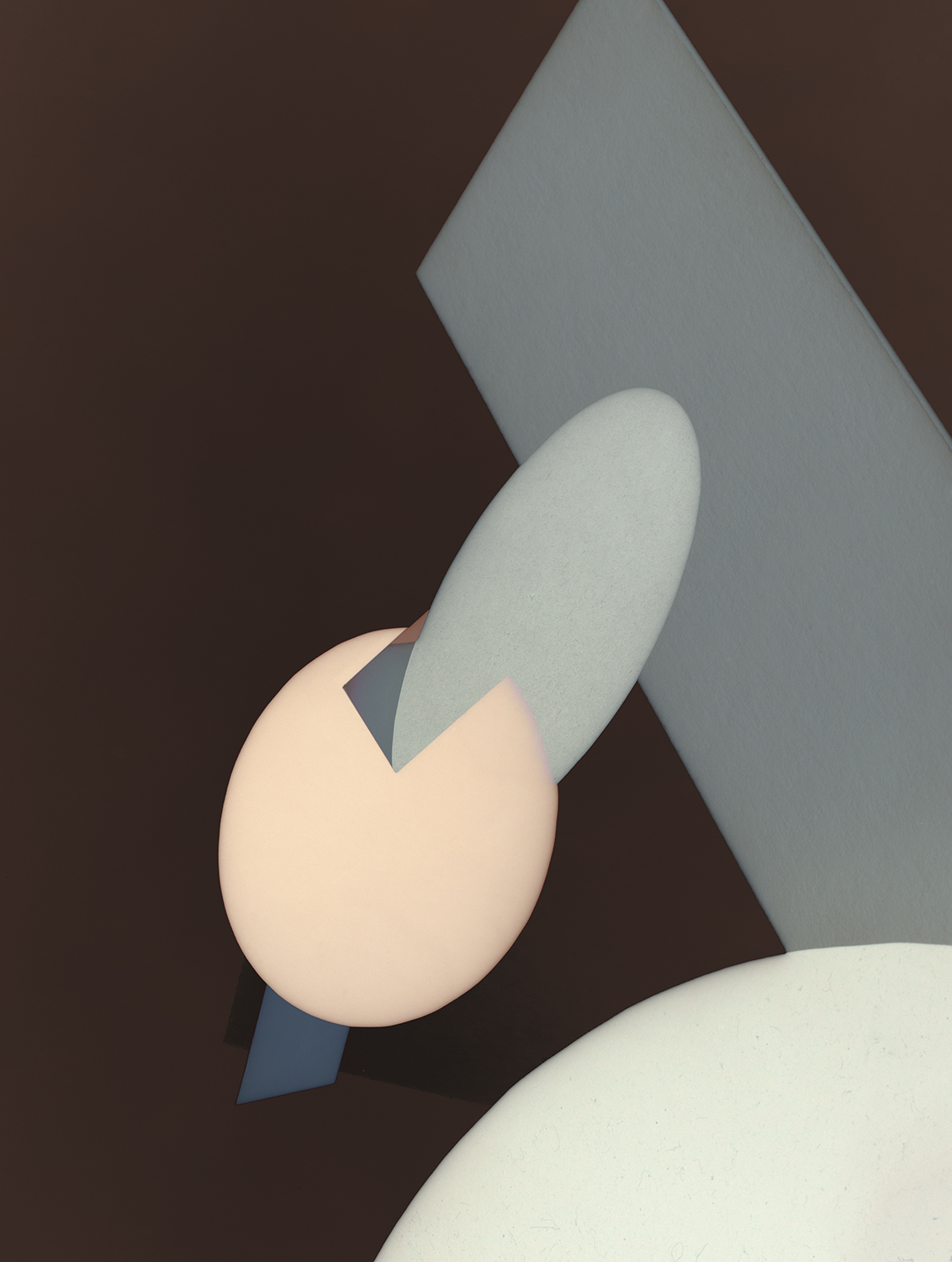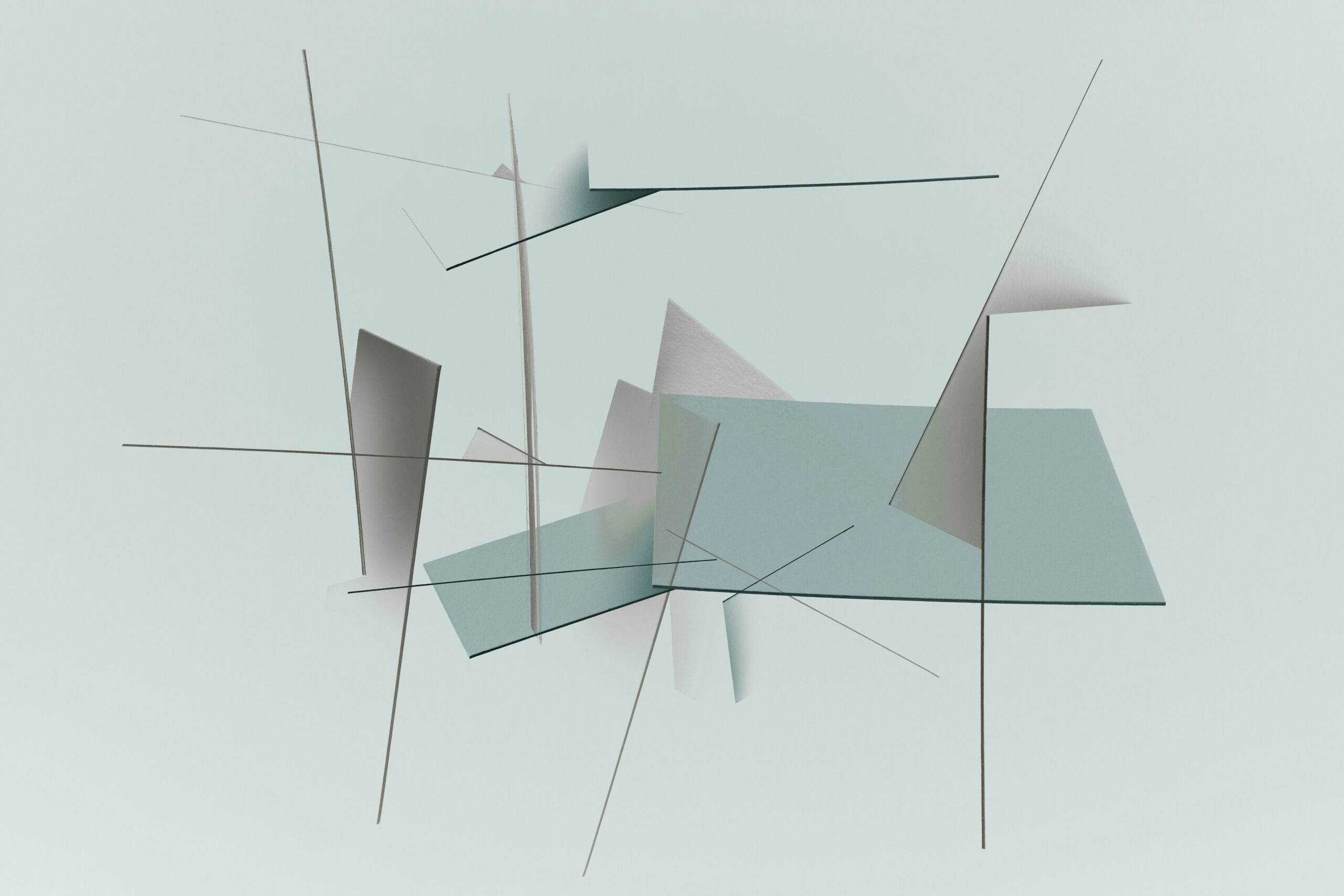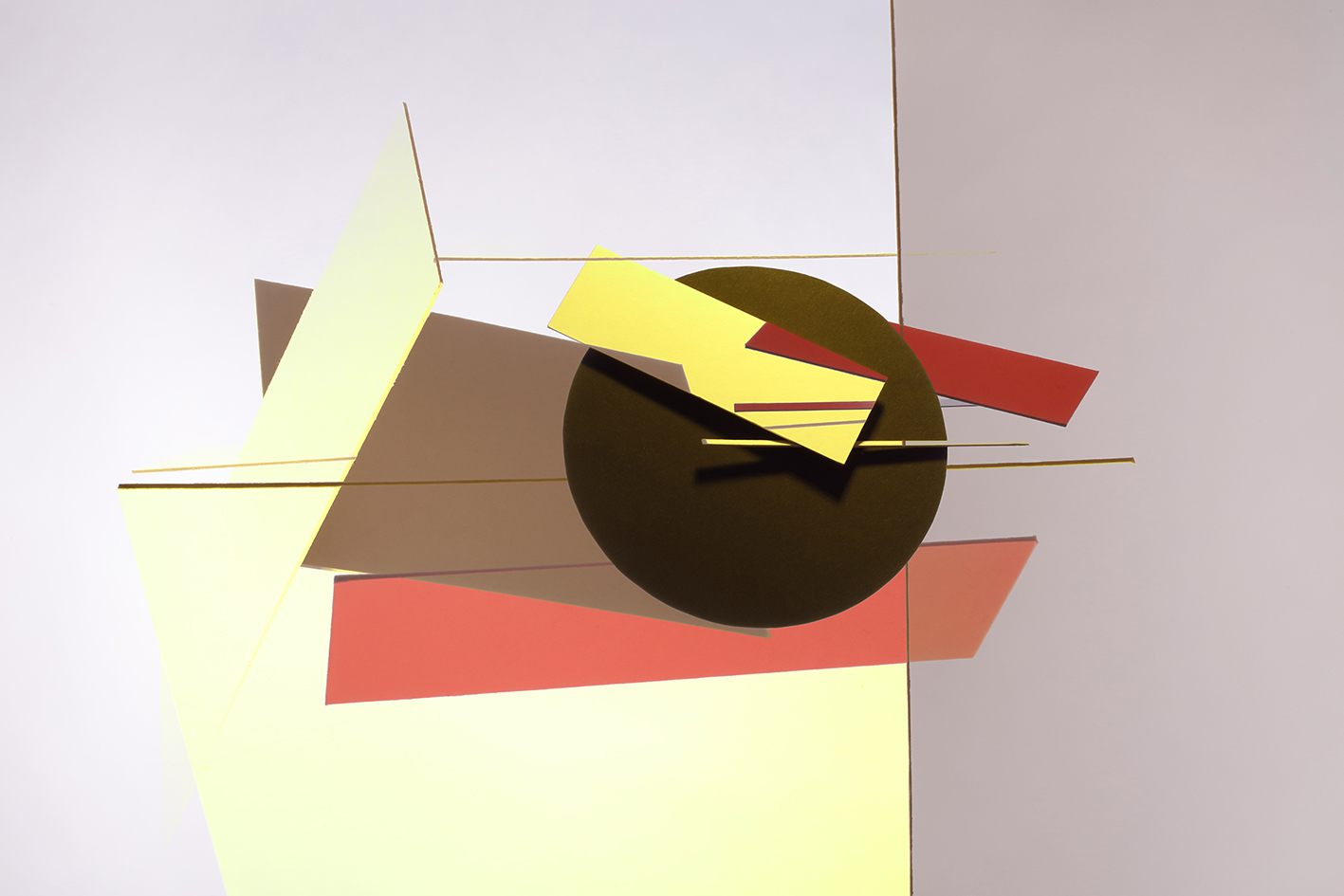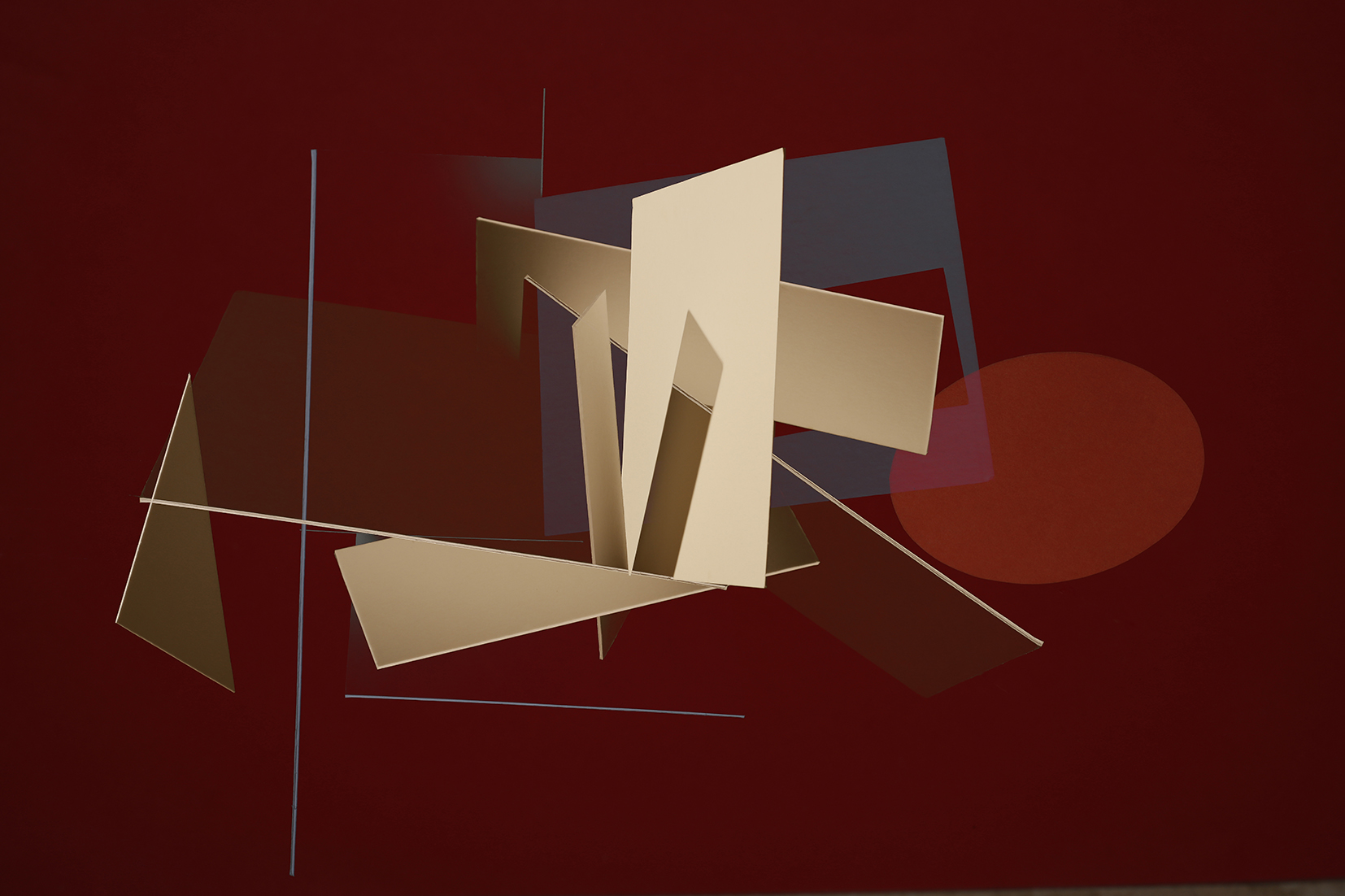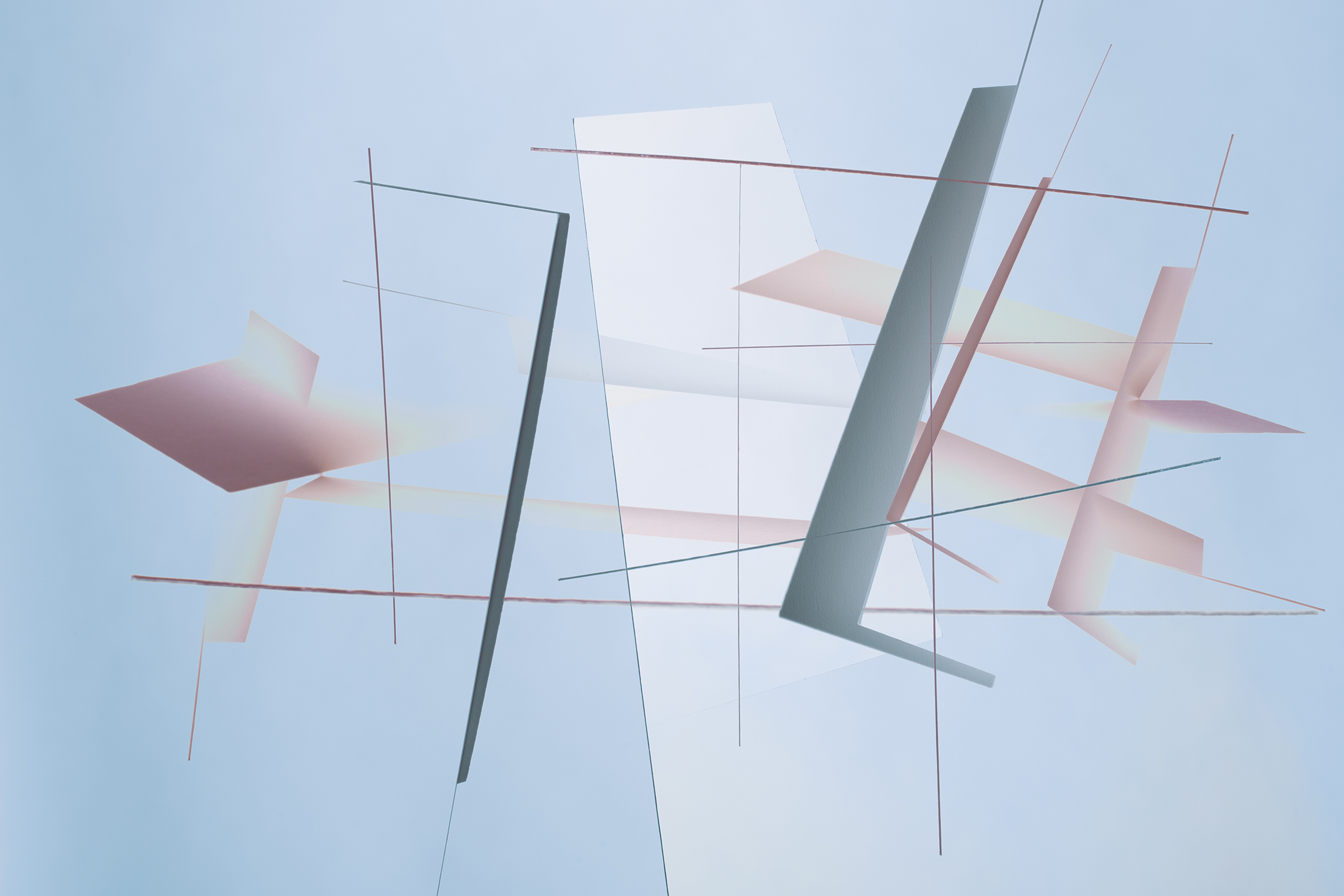Colors mix. They blend into each other. They blend into objects.
Objects merge and mingle into each other, disappear into color.
Something we do not know develops.
A free form – develops – through light form.
In his Bauhaus manifesto of 1919, Walter Gropius writes that the barrier between artists and craftsmen should be abolished. They should unite. Architecture is to be perceived as a „Gesamtkunstwerk“ that unites all of the design disciplines such as architecture, interior design, and furniture design. In the Bauhaus School of Design founded in 1919, for example, where architects, sculptors, and painters study, wall-paper is designed right alongside chairs and lamps. I have designed wallpaper by using non-object-based photography, which I developed from the design teachings of the Bauhaus School. I studied the work of one of the Bauhaus teachers, László Moholy-Nagy, and was deeply inspired by his viewpoints. Aspects of his work from his Bauhaus book Painting, Photography, Film found their way into the design project were the following: Conscious use of the means of design (shapes, color schemes, light, physiology), the joy of experimentation with technique and environment, rethinking the given (thinking anew).
The „freed“ forms are photographs that lead to a newly complex form through the interplay of form, plane, and color. In compositional organization, objects such as cardboard, wood, paper cubes, aluminum lids form interwoven and integrated conglomerates. Constellations of the objects suggest movement as well as direction. Different means and modes of spatial representation collide. Interleaving transparency lends depth to a room and opens up a spatial dimension that supersedes the two-dimensional plane. Contradictions occur since several different perspectives coincide. Differently sized objects that are incorrectly grouped on the same plane without limitations, not depicting any reality, lead to confusion and repel a strong depth perception. The same holds true for non-logical lighting of objects, where light and shadow are non-representative of reality. The goal is not the perception of something specific, perceptible, or objectifiable. Rather, the goal is something sensate and ineffable. Not everything can be captured in words. The viewer reflects, finding the images chaotic or ordered. The photographs leave room for the viewer’s subjective, uninhibited perception. A picture may cause deep, satisfying pleasures so that the objects synch up, moving together in intimate rhythms and visual harmony. Or the viewer may experience disgust, so that the objects appear as random arrangements, dissonant and vertiginous. An attempt at interpretation is provoked impromptu, at a subconscious level.

